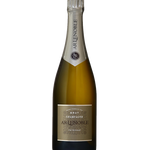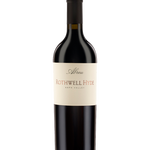Vous n'avez aucun article dans votre panier.
The Side Effects of Red Wine: Reactions and How to Manage Them?

Red wine is a beloved beverage worldwide, cherished for its rich flavors, aromas, and potential red wine health benefits. For some people, however, enjoying a glass may occasionally bring reactions such as headaches or facial redness, which can range from mild to more noticeable depending on individual sensitivity. Others might experience drowsiness or sneezing. In this article, we’ll take a closer look at these side effects — exploring why red wine can sometimes trigger them, how much is considered too much, and even why you might find yourself craving it. By understanding these reactions, you’ll be better equipped to enjoy red wine responsibly while minimizing discomfort and continuing to appreciate its pleasures.
Why Does Red Wine Give Me a Headache?
One of the most common complaints among wine drinkers is experiencing a headache after consuming red wine. But why does red wine give me a headache? The answer lies in several factors:
Histamines:
Histamines are chemicals found in fermented foods, including red wine. They are produced during the fermentation process and can cause allergic reactions in some people. Histamine intolerance can lead to headaches, nasal congestion, or other symptoms. Red wine typically contains higher levels of histamines than white wine, which may explain why some people notice headaches after enjoying red wine.
Tannins:
Tannins are compounds found in the skins, seeds, and stems of grapes. They give red wine its structure and astringency. While tannins are beneficial for aging the wine, they can also trigger headaches in some individuals, particularly those who are sensitive to them.
Sulfites:
Sulfites are preservatives used in winemaking to prevent oxidation and spoilage. While sulfites can help maintain the freshness of red wine, they can cause headaches in some individuals, especially those who are sensitive to them. Sulfite intolerance is relatively rare, but it can lead to headaches, difficulty breathing, or rashes.
Alcohol:
Alcohol is a well-known headache trigger, especially when consumed in excess. Red wine, like any alcoholic beverage, contains ethanol, which can lead to dehydration and a headache if consumed in large quantities. Additionally, alcohol can cause blood vessels to dilate, contributing to the throbbing pain often associated with a hangover or wine-induced headache.
Dehydration:
Alcohol is a diuretic, meaning it can increase urine production, leading to dehydration. Dehydration is one of the primary causes of headaches after drinking alcohol. To reduce the risk of headaches, it’s important to drink plenty of water alongside your glass of red wine.
Why Does My Face Turn Red After Drinking Red Wine?
If you’ve ever noticed that your face becomes red after drinking red wine, you’re not alone. Many people experience this reaction, which is often due to a condition called alcohol flush reaction. Here’s why your face turns red when you drink wine:
-
Histamine Sensitivity:
Red wine contains histamines, which are responsible for causing redness and flushing in some individuals. When you drink red wine, histamines can trigger the dilation of blood vessels, leading to the characteristic flush on your face. This is more common in individuals who are sensitive to histamines or have a reduced ability to metabolize them. -
Alcohol Metabolism:
Some people, especially individuals of East Asian descent, have an enzyme deficiency known as aldehyde dehydrogenase 2 (ALDH2). This enzyme is responsible for breaking down acetaldehyde, a toxic byproduct of alcohol metabolism. When ALDH2 is deficient, acetaldehyde builds up in the body, causing facial redness, nausea, and even headaches. This reaction is commonly referred to as the "Asian flush." -
Vasodilation:
Alcohol, including red wine, causes blood vessels to dilate. This vasodilation can increase blood flow to the skin, particularly on the face, resulting in redness or a flushed appearance. This effect is temporary and usually fades after a short period.

Why Does Red Wine Make Me Sleepy And Tired?
Another common complaint among red wine drinkers is the feeling of drowsiness or sleepiness after a glass or two. Why does red wine make me sleepy? There are several potential reasons for this:
-
Melatonin Content:
Red wine contains small amounts of melatonin, a hormone that regulates sleep. While the levels of melatonin in red wine are not enough to cause significant sleepiness, they may contribute to a feeling of relaxation or drowsiness, particularly if consumed before bed. -
Alcohol’s Sedative Effect:
Alcohol naturally has a relaxing effect on the body, which for some people can lead to drowsiness, especially if enjoyed in the evening. It slows down the central nervous system and can promote relaxation, which may lead to drowsiness. For some people, this sedative effect can be stronger than for others, especially when combined with the natural relaxing qualities of red wine. -
Blood Sugar Levels:
Alcohol can cause a drop in blood sugar levels, leading to feelings of tiredness or fatigue. This can be particularly noticeable after drinking red wine, as it may cause a temporary sugar crash, leaving you feeling sleepy.
Why Do I Sneeze When I Drink Red Wine?
You might have noticed that you sneeze or experience nasal congestion after drinking red wine. This reaction is actually quite common and can be caused by several factors:
-
Histamine Sensitivity:
As mentioned earlier, red wine contains histamines, which can trigger allergic reactions in sensitive individuals. Sneezing, nasal congestion, and itchy eyes are common symptoms of histamine intolerance. This is because histamines promote inflammation in the body, affecting the respiratory system and causing the symptoms of an allergy. -
Sulfite Sensitivity:
Some individuals are sensitive to sulfites, which are used as preservatives in red wine. If you're allergic to sulfites, drinking red wine can lead to sneezing, congestion, or even asthma-like symptoms. This reaction is more common in individuals with asthma or other respiratory conditions. -
Alcohol-Induced Inflammation:
Drinking alcohol can lead to inflammation in the sinuses and nasal passages, which might trigger sneezing or congestion. The inflammation is usually temporary and subsides after the body processes the alcohol.
Why Am I Craving Red Wine?
Craving red wine might seem odd to some, but it’s actually a fairly common phenomenon. If you’ve been wondering why am I craving red wine, here are a few possible explanations:
-
Psychological Associations:
Sometimes, cravings for red wine may be tied to specific events or emotional states. For instance, if you associate drinking red wine with relaxation, socializing, or enjoyable moments, your brain might crave it in certain situations. -
Nutrient Deficiencies:
Red wine contains several vitamins and minerals, including iron, magnesium, and potassium. If your body is deficient in these nutrients, you may develop a craving for red wine as a way to fulfill that need. However, this doesn’t mean you should drink excessively for nutrition. -
The Effects of Alcohol:
Alcohol can stimulate the release of dopamine, the "feel-good" neurotransmitter in the brain. Over time, this can create a psychological association between drinking wine and feeling good, which may lead to cravings.
Daily Red Wine Limit
If you're wondering how much red wine is too much, it's important to understand the risks associated with overconsumption. While moderate red wine consumption has been linked to some health benefits, drinking too much can have serious health consequences.
-
Moderate Consumption:
For most people, moderate consumption is defined as one glass (5 ounces) per day for women and two glasses (5 ounces each) per day for men. This amount is typically safe and may even offer health benefits, such as improved cardiovascular health. -
Excessive Consumption:
Regularly drinking more than recommended can take a toll on health — from weight gain to strain on the liver — which is why experts emphasize moderation.
How to Tell If Red Wine Has Gone Bad?
A common question among wine drinkers is how to tell if red wine has gone bad. While red wine doesn’t spoil in the same way that food does, it can deteriorate over time, especially after being opened. Here are some signs that your red wine may have gone bad:
-
Oxidation:
Oxidation occurs when the wine is exposed to air for too long. If your wine has a vinegary or overly sharp taste, it may have oxidized. This process can make the wine taste flat and less enjoyable. -
Changes in Color:
Red wine can change color as it ages. If your wine has turned brown or orange, it may be a sign that it has passed its prime. -
Off Smell:
If the wine smells like rotten fruit, vinegar, or has a musty odor, it is likely spoiled and should not be consumed.
| Symptom | Likely Cause | Quick Fix |
|---|---|---|
| Headache | Histamines, tannins | Hydrate, choose low-tannin wines |
| Facial redness | Alcohol flush reaction | Drink slowly, avoid high-alcohol wines |
| Drowsiness | Melatonin, blood sugar drop | Eat before drinking |
| Sneezing | Sulfites, histamines | Try organic wines |
Conclusion
At Bidvino, we believe great wine should always be enjoyed with awareness and appreciation. Explore our selection of responsibly sourced red wines and discover your perfect glass.
Frequently Asked Questions (FAQs)
1. Why does red wine give me a headache?
Red wine contains histamines, tannins, and sulfites, all of which may contribute to headaches in sensitive individuals. Alcohol itself can also contribute to dehydration, which may lead to a headache.
2. Why does my face turn red when I drink wine?
Red wine can cause facial redness due to histamine sensitivity or a deficiency in the enzyme aldehyde dehydrogenase 2 (ALDH2), which helps metabolize alcohol.
3. Why does red wine make me sleepy?
Red wine contains small amounts of melatonin, a hormone that regulates sleep, and alcohol is a depressant that can promote drowsiness.
4. Why do I sneeze when I drink red wine?
Sneezing and nasal congestion can be triggered by histamine sensitivity or sulfite intolerance.
5. How much red wine is too much?
Drinking more than the recommended one glass per day for women and two glasses per day for men may increase health risks if consumed well above recommended levels.


















